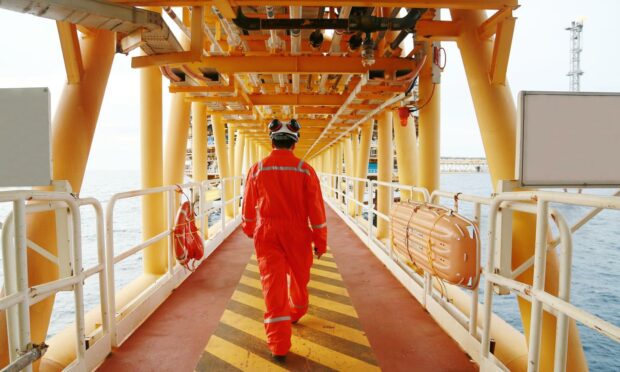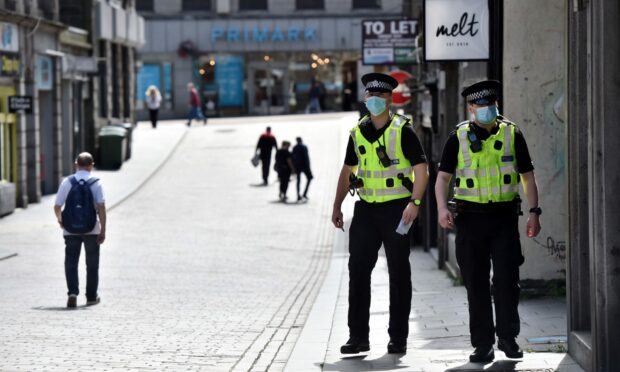Experts warn the north-east shows “worrying” signs the economy is lagging far behind the rest of Scotland in its recovery from the Covid pandemic.
Stark jobs data shows the region is the only part of the country not bouncing back to the levels of employment recorded before the coronavirus shutdown.
The trend has been linked to the double-whammy faced by the north-east as a result of the Covid-19 lockdown coinciding with the impact of the oil price crashing last year.
Controversial local restrictions introduced in Aberdeen in August last year are also thought to have contributed to a large fall in workers at that time.
Official payroll figures for last month put the number of employees in the north-east at 97.3% of the rate in October 2019.
This compares to 99.9% in eastern Scotland, 100.4% in the Highlands and islands, 100.8% in southern Scotland, 100.9% in west central Scotland, and 101.1% across the UK.
“It’s a bit worrying for the north-east still,” said the economist Mairi Spowage, interim director of the Fraser of Allander Institute at Strathclyde University.
“We don’t have much actual regional data, hard data, on it yet.
“But the payroll data, that has got up to October, would suggest that quite a lot of areas of Scotland have recovered pretty well, except for the north-east of Scotland.”
‘Worrying for the north-east’
In October 2019, the north-east had 230,047 payroll employees, according to the figures, which do not include self-employed people.
The figure for last month was 223,786.
It has recovered but it is nowhere near pre-pandemic levels, whereas every other region is above.”
Mairi Spowage, Fraser of Allander Institute
One of the largest monthly drops in the region was between July and August last year, at the time Aberdeen faced a local lockdown due to local virus outbreaks.
The area’s payroll workforce fell by 2,704 then, although there were decreases recorded in other regions at the same time.
Ms Spowage also pointed to statistics for employment in the oil and gas industry as a key explanation.
“You can see it in the GDP data. Although it doesn’t include offshore extraction activity, it has got mining, and quarrying and support services in it – and that is one of the worst sectors compared to pre-pandemic levels,” she said.
On Wednesday, the latest official figures showed that Scotland’s GDP grew by 0.4% in September, leaving output just 1.1% below the pre-pandemic level of February 2020.
The overall figures for jobs were highlighted by the Scottish Government’s chief economist Gary Gillespie in a report last week.
Economic scarring
The data emerging suggests the majority of the 80,000 Scots who were being supported by the furlough scheme before it ended in September have returned to work.
Mr Gillespie said this “should contribute to economic scarring being lower than initially feared”, although he also warned of increasing “uncertainty” due to labour shortages.
During 2020, employment levels fell by almost 4% across Scotland, but only the north-east is still to rebound.
“The north-east is pretty much the only region of Scotland that is below that,” said Ms Spowage.
“It has recovered but it is nowhere near pre-pandemic levels, whereas every other region is above.
“So you can really see that north-east effect in the data.”
Crucial sector
Russell Borthwick, chief executive of Aberdeen and Grampian Chamber of Commerce, said the region had to deal with the oil and gas downturn, low prices and the pandemic.
“However, this is one of the most economically resilient parts of the UK and we are already seeing the innovative ways in which businesses here are leading the way towards the new, greener economy,” he said.
“A skills shortage is also slowing employment levels in some sectors, as outlined in the Oil and Gas Transition Survey published by AGCC and KPMG earlier this month.
“It showed that firms are less confident about their ability to secure skilled talent in areas outside of oil and gas, and SMEs in the sector will require more support to identify and develop the skills they require to transform their own businesses.”
He said the problems make First Minister Nicola Sturgeon’s recent opposition to future oil exploitation “all the more disappointing”.
“The energy-transition opportunity for Aberdeen could in fact be bigger than the oil and gas industry – but to get there, we need strong leaders, ones who are willing to cut through the noise, see the big picture and get our transition steps in the right order to protect jobs, provide retraining opportunities and create new ones,” he said.


